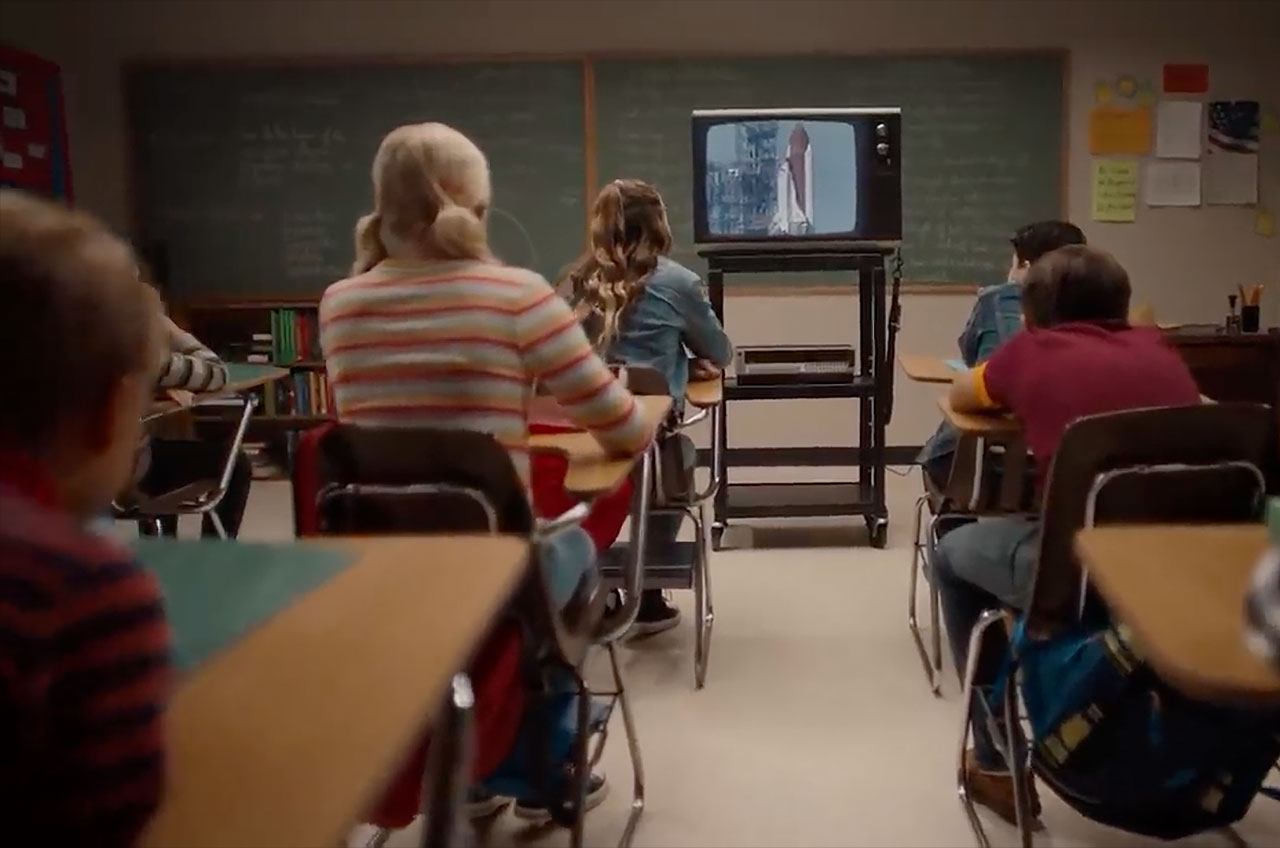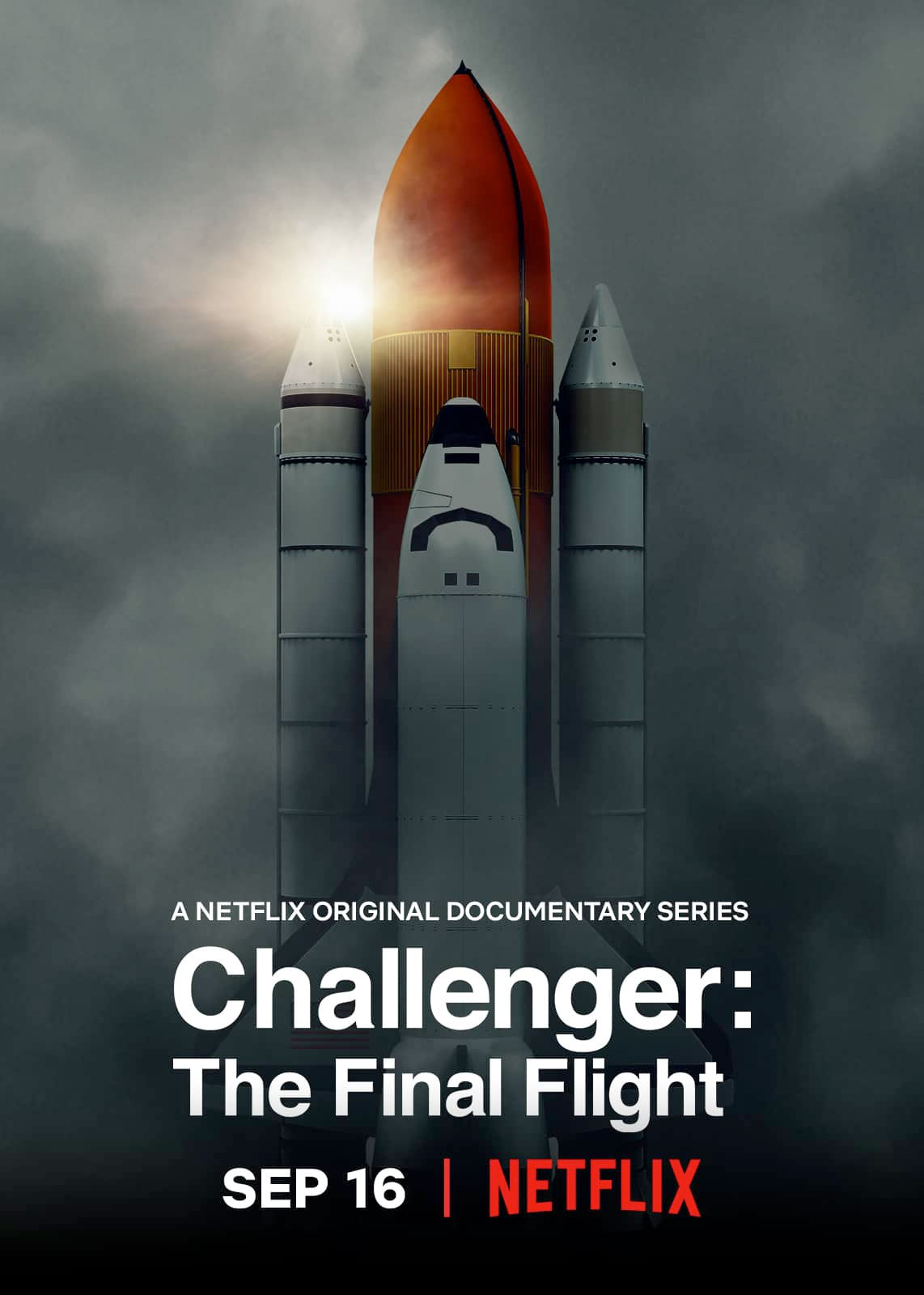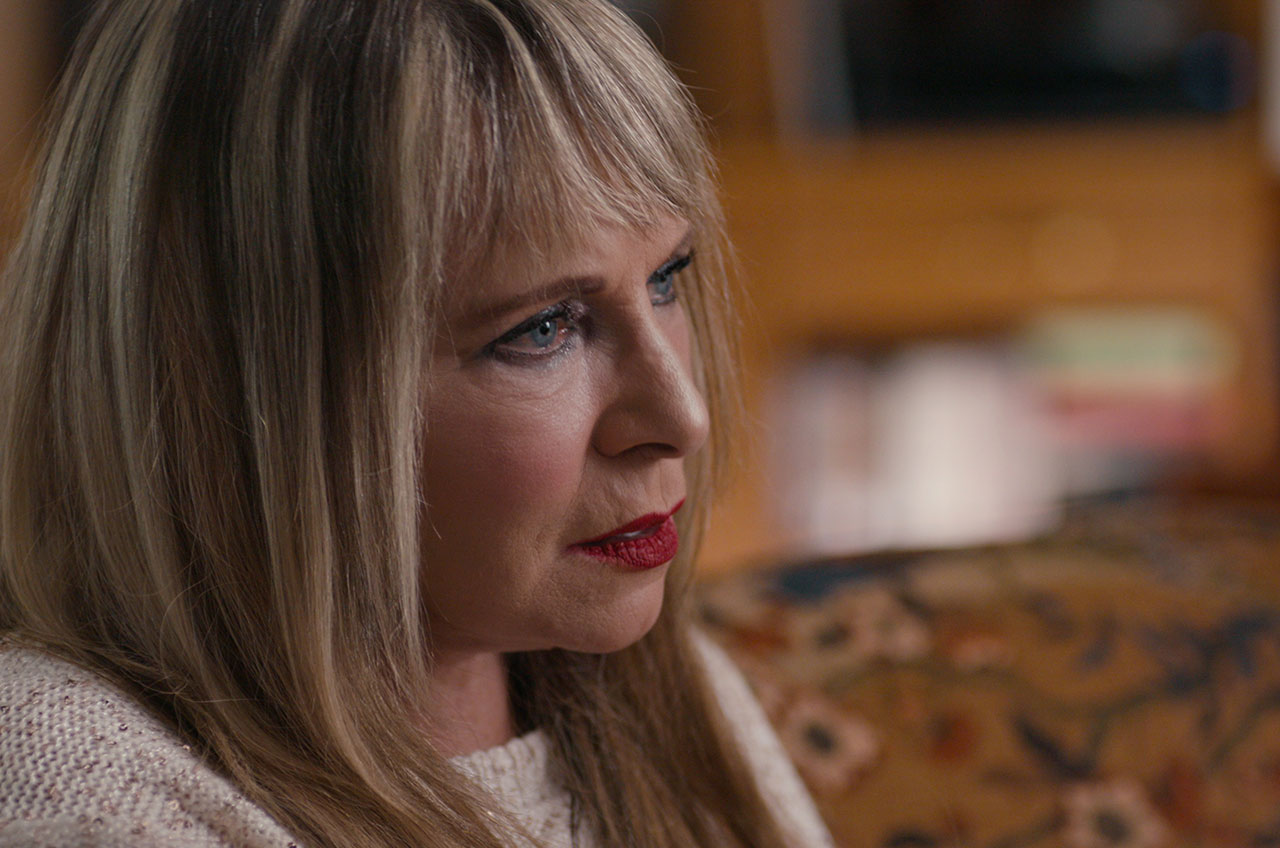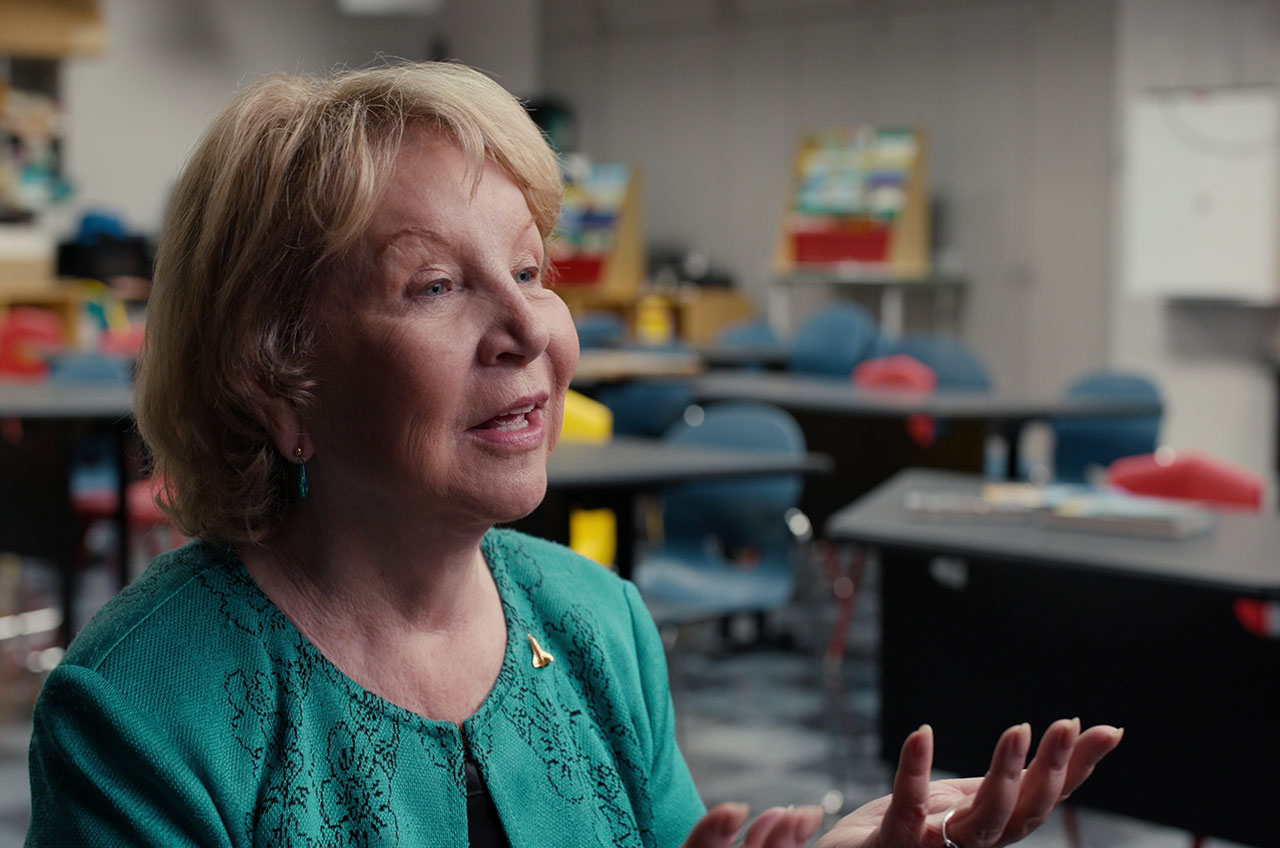'Challenger: The Final Flight' docuseries recounts space shuttle tragedy on Netflix

Glen was in his algebra class at a middle school in New Jersey when a teacher ran in and said that everyone needed to get to the cafeteria because something terrible had just happened. Daniel was also in a math class, but at his high school in Wyoming, when word came to turn on the TV. Steven was at his elementary school in California and was watching the launch coverage live.
For all three, like millions of other students across the nation, it was a moment that they would never forget.
"It was a formative moment in my life," said Glen Zipper, who, along with J.J. Abrams, served as an executive producer on "Challenger: The Final Flight," a new, four-part docuseries premiering on Netflix Wednesday (Sept. 16). "If I look at the trajectory of my life from that point forward, it is sort of like everything tracks back to Challenger."
Related: Remembering Challenger: NASA's 1st Shuttle Tragedy in Photos

Directed by Daniel Junge and Steven Leckart, "Challenger: The Final Flight" looks back at the Jan. 28, 1986 space shuttle tragedy that claimed the lives of five NASA astronauts, a payload specialist from a satellite manufacturer and a social studies teacher who was selected to be the first "normal person" to fly into space. Using archival footage and newly-conducted interviews with program officials, astronauts, journalists and the family members of the fallen crew, "Challenger" examines why the so-called accident occurred and how it impacted both NASA and the individuals directly involved.
"From the beginning, we said that we only wanted to interview people who lived the history personally and had a firsthand experience," Leckart said in an interview with collectSPACE.com. "We knew that the power of a first-person story is such that you will wind up in the hallways of somebody's memory and what comes out in the room during an interview is sometimes completely unplanned and even then, they are not sure they meant to go there."
"I think that ultimately is why this series feels as intimate and as personal as it is," Leckart said.
Get the Space.com Newsletter
Breaking space news, the latest updates on rocket launches, skywatching events and more!

Over the course of the four episodes, "Challenger" re-introduces — or, in the case of anyone watching under the age of 35, perhaps introduces for the first time — the members of the fallen STS-51L crew based on the recollections of their loved ones and colleagues. Led by commander Francis "Dick" Scobee, Challenger's final crew included pilot Michael Smith, mission specialists Ellison Onizuka, Judith Resnik and Ronald McNair, payload specialist Gregory Jarvis and first "Teacher in Space" Christa McAuliffe.
"When I talked to people who said they remembered the incident and it left an indelible mark on them, I would ask, 'Do you remember the astronauts?' And they would go, 'The astronauts were Christa McAuliffe and...' If you don't remember the names of the astronauts, certainly you don't remember their stories — and perhaps we never knew their stories," said Zipper.
"They are all heroes and they all had families, and the loss of their lives affected everyone who loved them in profound and also surprising, inspired ways. I thought we needed to tell that story from their perspective," he said.
Beyond their roles on the ill-fated mission, "Challenger" describes the paths that each crew member followed to be assigned to the shuttle, what they each valued in life and how they personally approached the risks associated with spaceflight. In retelling their stories, "Challenger" reveals who it was on the STS-51L crew who snuck out of quarantine to make one last visit with his family and shares seldom, if ever, publicly seen photos and home videos that provide a more personal insight into the astronauts' personalities.
Related: The Space Shuttle Challenger Disaster: What Happened? (Infographic)

Equally intimate, though in a different way, are the interviews with some of the NASA managers who made the call to launch that cold January day and some of the engineers who worked at Morton-Thiokol (today part of Northrop Grumman) who warned of a pending disaster given their growing concerns over the performance of the shuttle's rocket boosters and, specifically, their rubber o-ring seals. Zipper and Leckart were inspired to make a documentary about Challenger after learning about the guilt that one of the engineers, the now-late Bob Ebeling, carried through the rest of his life.
"It was at that moment when we started to peel back more of the onion, so to speak, about the fallout and who the players were. We spent a couple of years doing a tremendous amount of research to find out just how far back the problems of the o-rings were documented," said Leckart.
Throughout their making the series, Leckart and Junge were careful to build the story around the people they interviewed and not focus on the tragedy alone.
"When you're talking about Challenger, the emotions are right there. In some ways, the emotions around the 'explosion' are the low hanging fruits that all filmmakers are going to go for, and sometimes it is done gratuitously," Junge told collectSPACE. "So, we wanted to build a whole story where you get to know these people fully beforehand and you get to know the inevitability, in some ways, of this tragedy. And then, on the backend, to unwind that to the lessons learned and to project forward."
"The one thing that we wanted to be mindful of was we didn't want to portray the families as victims, because they certainly don't see themselves as victims," said Zipper. "Obviously, they experienced the tragedy and they experienced pain, unfathomable pain, that no one else could ever, ever truly understand, they can only empathize with it."
"But [the families have] taken the tragedy and turned it into something really special by creating the Challenger Center. To this day, the Challenger Centers are still out there, educating and inspiring kids," he said.
With the 35th anniversary of the tragedy approaching this January, the filmmakers are hopeful "Challenger: The Final Flight" resonates with those, who like them, are old enough to remember where they were at the time. They also hope the series can engage an audience that shares no connection to the loss.
"My daughter is 12 and she will watch it. I think it will probably be the first serious documentary she will watch, and certainly one that deals with death," said Junge. "I think that the series will speak to people who know nothing about Challenger, but will it also enlighten, or at least reinvigorate the interest of people in the space community? That will be interesting to see."
Follow collectSPACE.com on Facebook and on Twitter at @collectSPACE. Copyright 2020 collectSPACE.com. All rights reserved.
Join our Space Forums to keep talking space on the latest missions, night sky and more! And if you have a news tip, correction or comment, let us know at: community@space.com.

Robert Pearlman is a space historian, journalist and the founder and editor of collectSPACE.com, a daily news publication and community devoted to space history with a particular focus on how and where space exploration intersects with pop culture. Pearlman is also a contributing writer for Space.com and co-author of "Space Stations: The Art, Science, and Reality of Working in Space” published by Smithsonian Books in 2018.In 2009, he was inducted into the U.S. Space Camp Hall of Fame in Huntsville, Alabama. In 2021, he was honored by the American Astronautical Society with the Ordway Award for Sustained Excellence in Spaceflight History. In 2023, the National Space Club Florida Committee recognized Pearlman with the Kolcum News and Communications Award for excellence in telling the space story along the Space Coast and throughout the world.










